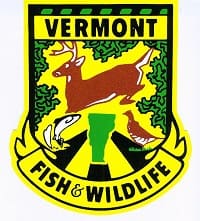Vermont Expands to Two Bear Hunting Seasons in 2013
OutdoorHub 08.12.13

Vermont now has two bear hunting seasons. The early bear hunting season, which requires a special bear tag, starts September 1 and continues through November 15.
The late bear season begins November 16 and continues through November 24. The bear tag that comes with a hunting license is for use during this late season. This season has been extended four additional days during the November deer season.
The early season bear tag costs $5 for residents and $15 for nonresidents. A hunter may only take one bear during the year.
The new season was instated to help better manage Vermont’s bear population, which is now estimated at slightly more than 6,000 black bears, according to the Vermont Fish & Wildlife Department. The number of bears has increased during the last two decades and is now higher than the objective of 4,500 to 6,000 bears listed in Vermont’s Big Game Management Plan for 2010-2020.
“Twenty-five years ago Vermont’s bear population was less than 3,000, and bears existed primarily in the mountains and in the northeastern quarter of the state,” said wildlife biologist Forrest Hammond. “Through changes in hunting regulations identified in the previous Big Game Management Plan, we successfully encouraged bears to increase in number and expand into towns where their numbers were low.”
“But,” added Hammond, “we are now seeing more incidents of bears doing damage, primarily where they are attracted to foods such as bird seed, pet food left outside, garbage containers, bee hives, chicken coops, barbecues, livestock, and field corn.
“Carefully regulated hunting plays a very important role in wildlife management by helping to control the growth of the black bear population and allowing for the sustainable utilization of black bears for food and other purposes,” said Hammond.
Hammond reminds hunters they need to collect a small pre-molar tooth from each harvested bear, because, he stressed, “The collection of a premolar tooth from every bear reported is critical to the bear project.”
“The tooth is actually quite small and easy to loosen with a knife,” he added. “Directions for removing the tooth are on the back of the envelope provided by the check station. We are able to age the bear and gain essential knowledge about the status of Vermont’s bear population.”
Hunters took 618 bears last year in Vermont. A report listing the number of bears taken in each town during the 2012 bear season is available on Vermont Fish & Wildlife’s website at (vtfishandwildlife.com). Click on “Hunting and Trapping” and then “Big Game.”

